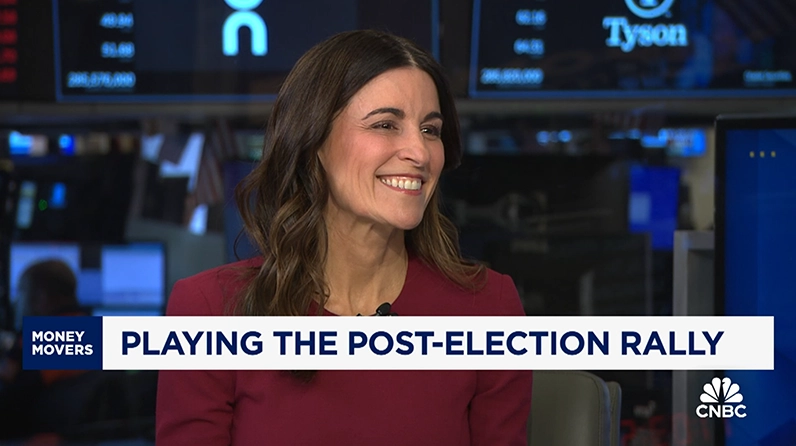

Yesterday’s Fed decision may prove to be one of the most impactful and surprising coming out of a scheduled meeting in the last decade.
Highly anticipated and hotly contested, yesterday’s Federal Reserve (Fed) decision may prove to be one of the most impactful and surprising coming out of a scheduled meeting in the last decade. In recognition of the need to embark on a shift to a more accommodative stance, the Fed lowered the fed funds target rate by 0.50% to a range of 4.75% to 5.00%. Justification of the decision to move rates lower was referenced in the statement, namely that the FOMC “has gained greater confidence that inflation is moving sustainably toward 2%.” In addition, the statement very explicitly reflected the Fed’s dual mandate, asserting that the FOMC is “strongly committed to supporting maximum employment and returning inflation to its 2 percent objective.” While all of the voting members of the FOMC were in favor of a rate cut, Michelle Bowman proved the only dissenter to the 50-basis point move, preferring a more measured 25 basis point cut; this marked the first dissent by a Fed governor since 2005.
As it relates to future monetary policy actions, the updated dot plot reflects another 50 basis points in cuts by the end of 2024 as well as 100 basis points in cuts by the end of 2025, implying, in our view, that the fed funds rate target will be between 3.25% and 3.50% by the end of next year. This compares favorably with June’s expectation that rates would still be above 4% by the end of 2025. In addition to the dot plot, the Fed released its updated Summary of Economic Projections which is essentially a representation of each FOMC member’s view on various economic metrics. Changes from the June dot plot include a modest increase in the unemployment rate forecast for this year and next with the median coming in at 4.4% for both years. In addition, there was a meaningful decline in core PCE expectations for both this year and next with the members coalescing around 2.2% by the end of 2025 and a return to the 2% target by 2026. We believe the consistency in terms of GDP expectations was notable; expectations for growth in both 2025 and 2026 were maintained at 2.0%.
Fed Chair Jerome Powell’s comments during the press conference were colored by his desire to justify the magnitude of yesterday’s cut as well as the Fed’s belief that a soft landing can still be achieved. The Fed, as voiced by Powell, believes that it was correct to maintain restrictive policy to help restore the supply/demand imbalances in the economy and that the upside risk to inflation has diminished as a result of this normalization particularly in the labor market. Conversely, Powell admitted that the downside risks to employment have increased – no surprise to economists who have digested the last several employment reports, a meaningful revision to trailing twelve-month payrolls, and the anecdotal data available through ISM surveys and the Beige Book. As a result, Powell stated that he was “very pleased” in the decision to make a strong move in this meeting and that despite several questions implying that the Fed was already behind, he believes that the 50 basis point move should be viewed as a “sign of commitment” not to fall behind, which as translated means to stave off a sharp increase in unemployment.
While there was much conjecture around the magnitude of the cut, markets seem a bit unsure of how to react now that the decision is in writing. As we wrote in our note on payrolls on September 6th, the decision to cut rates aggressively could be both cheered or feared by investors – and it would appear we got a bit of both in yesterday’s post-release trading session. We believe lower rates should be positive for both corporate and consumer borrowers and could ignite a resurgence in borrowing – but likely with a bit of a lag. Alternately, fears of a sharper deceleration in demand and economic activity could likely transmit fairly readily to the labor market as job vacancies are well off their post-pandemic highs and immigration has pushed up the number of job seekers over the last two years.
Admittedly, U.S. equities and bonds have rallied meaningfully up through yesterday’s announcement, and there may just be a bit of repositioning occurring now that the first step towards lower rates has been achieved. The Fed may not have yet declared that their mission to deliver a soft landing has been accomplished, but U.S. investors in particular have been increasingly constructive on risk assets as the threat of a recession has diminished over the last 18 months. What is clear is that the Fed, notwithstanding an unexpected resurgence in inflation due to forces other than wage growth, believes that growth will persist and that prices and costs will stabilize back closer to pre-pandemic levels but that it also stands ready to loosen the shackles of higher rates at this point in the economic cycle.
As such, investors may consider a review of positioning, particularly in areas such as cash and short duration fixed income which are unlikely to deliver the same level of return over the near-to-mid-term as they have generated over the prior two years. In addition, we note that the broadening out of performance in the U.S. equity market could be aided by a lower rate environment, and we encourage investors to review their exposures to ensure that the concentrations which may have built up over the prior two years are not inhibiting participation in this rotation. In short, we believe that we are at an inflection point for U.S. monetary policy as well as fiscal policy, and we stand ready, supported by the depth and breadth of our global investment teams, to identify both the risks and the opportunities presented in order to deliver on our commitment to our clients.


VIDEO
Holly Newman Kroft Discussed Her Post Election Insights

MARKET COMMENTARY
Navigating the Uncertainty Before the Certainty

INSIGHTS
CIO Notebook: As a New Administration Waits in the Wings, the Fed Keeps Cuts Coming

INSIGHTS
CIO Notebook: Shock Infested Data Shows October Payrolls Slowing

VIDEO
Sam Petrucci Featured on CNBC’s “Power Lunch”

REPLAY
Private Wealth Year-End Investment Outlook

INSIGHTS
Cybersecurity in Focus
INSIGHTS
Election Roundtable: Trade, Taxes and Regulation
INSIGHTS
Elevate Your Well-Being Through Philanthropy
INSIGHTS
Key Planning Considerations Before Year-End
INSIGHTS
Personal Taxes and the Election
MUNICIPAL BASIS POINTS
A Wide-Open Market
VIDEO
Holly Newman Kroft Discusses Investing Around the Election
IMPORTANT INFORMATION:
This material is provided for informational purposes only and nothing herein constitutes investment, legal, accounting or tax advice, or a recommendation to buy, sell or hold a security. This material is general in nature and is not directed to any category of investors and should not be regarded as individualized, a recommendation, investment advice or a suggestion to engage in or refrain from any investment-related course of action. Any views or opinions expressed may not reflect those of the firm as a whole. Neuberger Berman products and services may not be available in all jurisdictions or to all client types. Diversification does not guarantee profit or protect against loss in declining markets. Investing entails risks, including possible loss of principal. Investments in private equity are speculative and involve a higher degree of risk than more traditional investments. Investments in private equity are intended for sophisticated investors only. Unless otherwise indicated, returns shown reflect reinvestment of dividends and distributions. Indexes are unmanaged and are not available for direct investment. Investing entails risks, including possible loss of principal. Past performance is no guarantee of future results.
Portfolio positioning views expressed herein are those of Neuberger Berman’s Private Wealth Investment Group, which may include those of the Neuberger Berman’s Asset Allocation Committee. Asset allocation and positioning views are based on a hypothetical reference portfolio. The Private Wealth Investment Group analyzes market and economic indicators to develop asset allocation strategies. The Private Wealth Investment Group works in partnership with the Office of the CIO. The Private Wealth Investment Group also consults regularly with portfolio managers and investment officers across the firm. The Asset Allocation Committee is comprised of professionals across multiple disciplines, including equity and fixed income strategists and portfolio managers. The Asset Allocation Committee reviews and sets long-term asset allocation models, establishes preferred near-term tactical asset class allocations and, upon request, reviews asset allocations for large, diversified mandates. Asset Allocation Committee members are polled on asset classes and the positional views are representative of an Asset Allocation Committee consensus. The views of the Asset Allocation Committee and the Private Wealth Investment Group may not reflect the views of the firm as a whole and Neuberger Berman advisers and portfolio managers may take contrary positions to the views of the Asset Allocation Committee or the Private Wealth Investment Group. The Asset Allocation Committee and the Private Wealth Investment Group views do not constitute a prediction or projection of future events or future market behavior. Defensive positioning generally means an underweight bias on allocations to risk assets such as equities and alternatives. Positioning views may change over time without notice and actual client positioning may vary significantly. Discussion of yield characteristics or total returns of different asset classes are for illustrative purposes only. Such asset classes, such as equities and fixed income, may have significantly different overall risk-return characteristics which should be consider before investing.
The information in this material may contain projections, market outlooks or other forward-looking statements regarding future events, including economic, asset class and market outlooks or expectations, and is only current as of the date indicated. There is no assurance that such events, outlook and expectations will be achieved, and actual results may be significantly different than that shown here. The duration and characteristics of past market/economic cycles and market behavior, including any bull/bear markets, is no indication of the duration and characteristics of any current or future be market/economic cycles or behavior. Information on historical observations about asset or sub-asset classes is not intended to represent or predict future events. Historical trends do not imply, forecast or guarantee future results. Information is based on current views and market conditions, which will fluctuate and may be superseded by subsequent market events or for other reasons.
Discussions of any specific sectors and companies are for informational purposes only. This material is not intended as a formal research report and should not be relied upon as a basis for making an investment decision. The firm, its employees and advisory accounts may hold positions of any companies discussed. Nothing herein constitutes a recommendation to buy, sell or hold a security. It should not be assumed that any investments in securities, companies, sectors or markets identified and described were or will be profitable. Investment decisions and the appropriateness of this content should be made based on an investor's individual objectives and circumstances and in consultation with his or her advisors.
Neuberger Berman Investment Advisers LLC is a registered investment adviser.
The “Neuberger Berman” name and logo are registered service marks of Neuberger Berman Group LLC.
©2024 Neuberger Berman Group LLC. All rights reserved